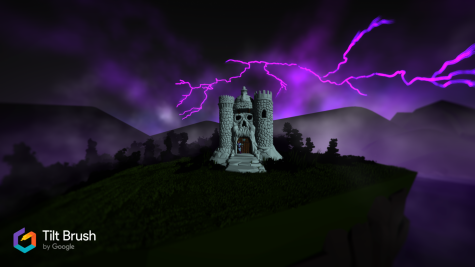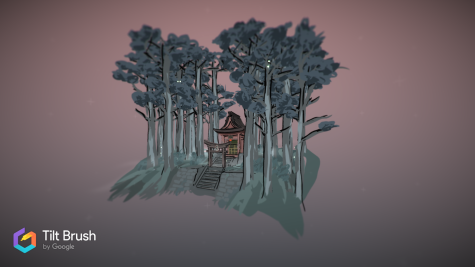Wilson incorporating virtual reality into freshman history class
Starting this year, Andrew Wilson, the freshman history teacher, will use a virtual reality program to teach his students about ancient history.
Virtual reality is a computer-generated 3D experience in an environment, which can be explored using interactive auditory and visual senses. He hopes to use this technology in his class to help his students better experience historical events.
This addition will improve students’ understanding of ancient history and give a great visual experience to his students. His goal is to have students use VR in class once in a while, starting in September. Because there is only one headset, while one student explores the VR, the rest of the class will see the progress through a computer screen. Below are some pictures taken of the I took pictures of Wilson’s adventures in another world an online user had created.
With the VR headset on, the participant is able to walk forward, turn 360 degrees and walk back again. In addition of 2 control devices, held in each hand, almost anything is possible, such as maneuvering around buildings, zooming out, and selecting different worlds.
Participants can select what time period or country they would like to visit. Corresponding to the worlds they choose, different historical objects appear on the 3D screen.
In my visual experiment, I visited Manhattan, New York and I was able to see hundreds of buildings, including the World Trade Center and the Empire State Building.
Other features include a drawing tool which the participant can use to draw anything they want in mid-air.

The virtual, 3D drawings online participants have created.
In the stimulation I experienced, I was able to interact with my drawings, such as to stick my head into the 3D drawing or to move around it. This is useful because students can draw on details in the VR which serves as an easy way for Wilson to explain details.
For complex images like the picture below, Wilson will be teaching his students how to create shapes on TinkerCad and upload them into their personal worlds. Tinkercad is an online based tool that can create and design 3D shapes. After creating shapes, students then can color their designs.

Access to VR is still hard, and to obtain high quality software is very expensive. The computer and the headset originally cost 2500 dollars, but with a grant, Wilson was able to acquire both. Despite it’s cost, this device will be a great use to his class and an innovative way to include new technology as a means to learn more about history.
